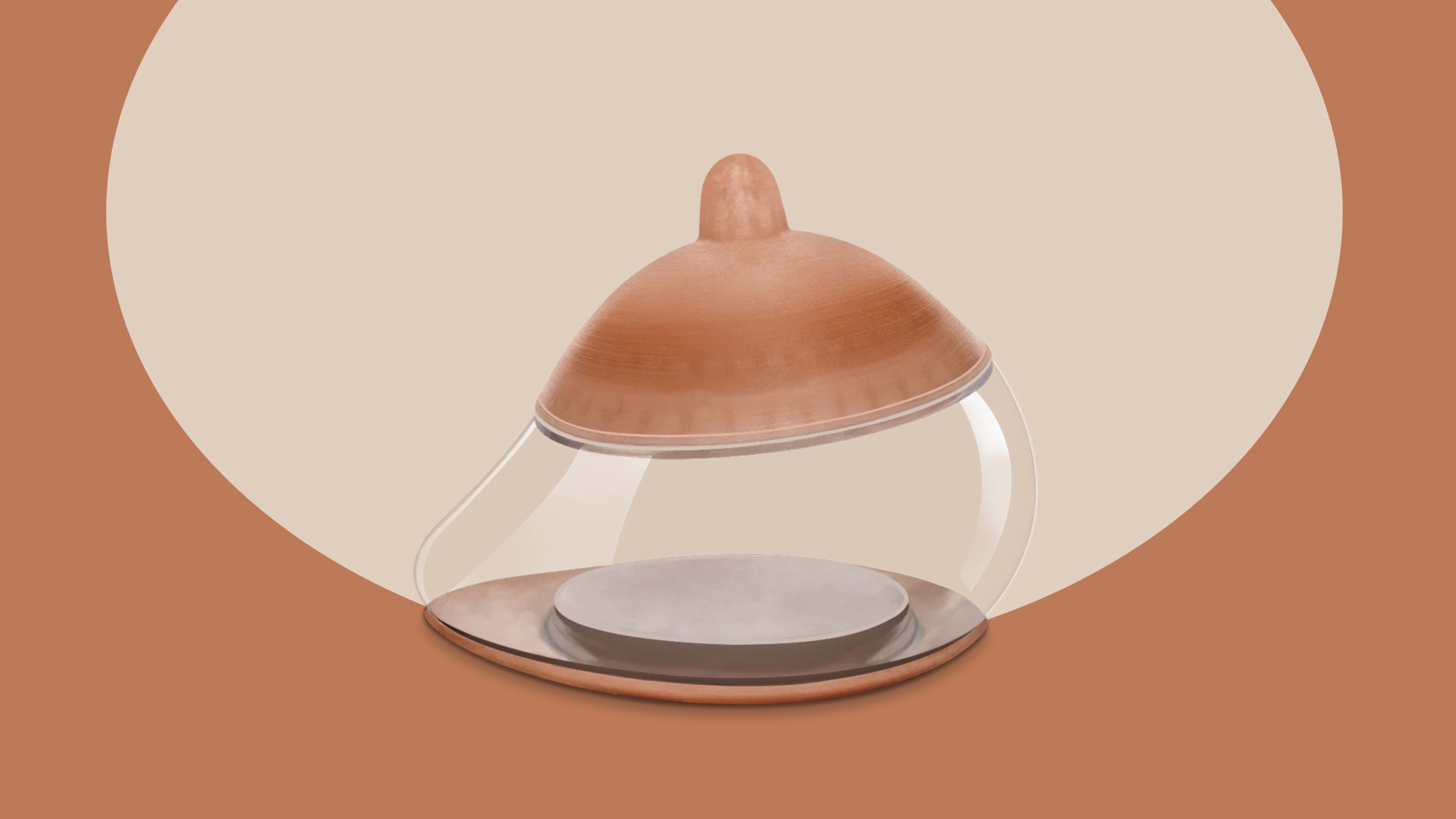Calling the top of a typical baby bottle a “nipple” is a convenient, if imprecise, shorthand. Yes, the rubber tip has the familiar form of a nursing mom, and yes, it has a tiny hole or holes through which milk can flow. But compared to the actual anatomy of a human nipple, which releases milk based on the lip and tongue movements of newborns and babies, the top of a baby bottle is really just a piece of rubber with a hole.

But it could be different. Emulait is a new startup that aims to make baby bottle nipples work more like real nipples. “There’s this vernacular that taking a regular baby bottle is like slamming a beer,” says Robert Worrell, cofounder and chief design officer of Emulait. “Babies prefer the bottle because it’s less work. It’s easier to get the flow.”
Made of silicone, Emulait’s design mimics the anatomy of the nipple and requires active suckling to get the milk out of the bottle. While most baby bottle nipples are hollow, Emulait’s has a more solid interior, with textures that approximate the human anatomy of a stimulated milk duct and areola of a nursing mother. Worrell calls Emulait’s design “biomimetic,” noting, “There’s texture, there’s substance inside. Conventional baby bottles, they’re just hollow nipples. They’re really unsatisfactory. What we’re doing is creating this mouthfeel for the baby.”
Cofounder Shilo Ben Zeev says the idea for Emulait came from his family’s challenges with breastfeeding after the birth of his daughter. Like many families, his struggled to make breastfeeding work smoothly, with a lower-than-average milk supply and a tongue-tie issue in the baby’s mouth. Struggles with latching led to repeated visits to lactation consultants and an earlier-than-expected reliance on bottles for feeding. “It was a very hard process,” Ben Zeev says. “We tried every bottle.”
Bottles did allow the baby to get milk, but then she preferred the bottle over her mother’s breast. With the World Health Organization recommending that babies breastfeed for the first two years of life, an early reliance on bottle feeding could hinder a baby’s ability to nurse effectively. Emulait was designed to allow bottle feeding to occur without replacing the health and bonding benefits of breastfeeding by making the bottle look and work as similarly to a breast as possible.
When he was first thinking about trying to solve this problem, Ben Zeev figured he’d have to come up with a way to quickly scan the shape of each user’s nipple and have a factory 3D-print each individual, unique nipple on demand. But in the research process, he learned what various studies have found—that in the vast majority of cases every nipple is one of five main shape types.
“We did our own study at UCLA,” Ben Zeev says. “We scanned 1,000 nipples and we got the same answer.”
Emulait comes in those five shapes, and in five different colors to match the skin tone of the user. Emulait’s app-based sizing process uses a smartphone’s camera to scan the breast and determine its color and which of the five main nipple shapes it most closely resembles.
“In less than 10 seconds it finds the match,” Ben Zeev says. The company stresses that this scan is not a photo, and only about a half-dozen data points are used to make the sizing determination. Ben Zeev and Worrell, Emulait’s two male founders, also point out that the company has many mothers on staff and a scientific advisory board of experts in maternal health and infant feeding.
Worrell explains that attachments inserted into Emulait’s nipple control the flow of milk based on the baby’s stage of development, and can be used up to about 18 months.
Separate from Emulait, Worrell has run his own product design and development company for 46 years, working with startups and established businesses on a range of consumer products and healthcare devices. Worrell first worked with Ben Zeev to help design Dario, a smart glucose meter for diabetics that Ben Zeev created.

Some experts question whether offering the product in five nipple shapes suggests an oversimplification of a complex process. “Every mouth is different, every suction is different,” says Jody Segrave-Daly, cofounder of the Fed Is Best Foundation, which focuses on infant feeding. “The nipple flow rate is very important, but so is the length of the nipple, the shape of the base, the compressibility.”
Segrave-Daly, who has worked with nursing babies and families for 30 years, says that Emulait’s website is light on the actual science backing up its claims, but thinks the variety of colors offered is a good sign that the company is serious about addressing the range of nursing styles and requirements of babies. “We need a wide variety of bottles because, let me tell you, there are many, many oral differences, from tiny mouths to high palates to flat palates to tight jaws,” she says.
While Emulait may not be providing many specific details on its research, the general idea behind the bottle has caught traction, at least on social media. The brand’s TikTok videos have been viewed millions of times, including one straightforward video showing how the nipple can be cleaned. Ben Zeev says about 30,000 people have signed up for Emulait’s waiting list. Production is nearly ready. Preorders begin March 8 for what Ben Zeev says will be a limited output at first, before the company is able to ramp up to mass production in July.
The product didn’t take shape fast enough for Ben Zeev’s family. “It took almost six years,” he says. Still, he’s hoping Emulait can help others in the near future.
Recognize your brand’s excellence by applying to this year’s Brands That Matter Awards before the early-rate deadline, May 3.
